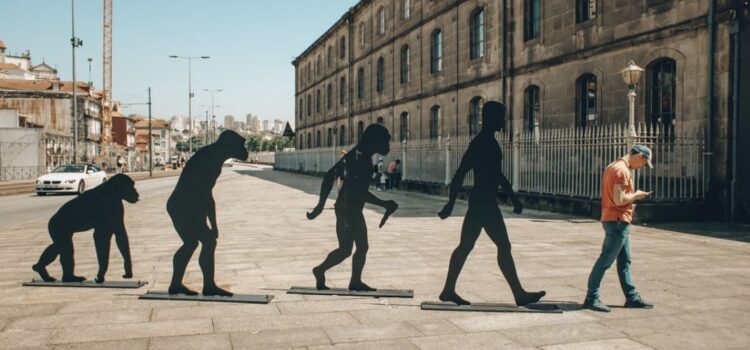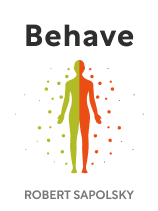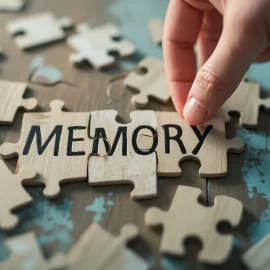

This article is an excerpt from the Shortform book guide to "Behave" by Robert Sapolsky. Shortform has the world's best summaries and analyses of books you should be reading.
Like this article? Sign up for a free trial here .
What is the connection between evolution and behavior? What are some examples of human behaviors that have survival value?
Our brains work the way they do because of evolution: Ancestors who behaved in certain ways were more likely to survive and reproduce, passing on the genes that caused them to behave in those ways. So now, many generations later, those genes still survive in us and influence our behavior.
Let’s examine the key categories of human behavior that are the product of evolution.
Kin Selection: Protecting Your Family
Kin selection is a term in evolutionary biology that means potentially sacrificing your own welfare or reproductive success in favor of your relatives’—for example, risking your life by fighting off a home intruder to protect your family. It evolved because, by definition, your relatives share many of your genes, so keeping them alive helps pass those genes on.
Sapolsky says that kin selection explains a great number of human behaviors, but that we can also find countless examples of people going against what kin selection should dictate. For instance, we can read news articles about people killing family members, or millionaires donating incredible amounts of money to strangers.
Sapolsky’s theory is that humans do follow kin selection, but the way we decide who our “kin” are isn’t entirely rational. On the one hand, we can look at total strangers and find similarities to ourselves. On the other hand, we can reject even our closest family members if they, for instance, behave in ways we find unacceptable.
Furthermore, we can be manipulated into feeling more or less related to others. Propaganda can paint groups of people as dangerous and monstrous—barely even human, let alone kin. And, conversely, campaigns emphasizing people’s humanity and similarities to us have been crucial in everything from promoting LGBTQ+ rights to raising funds for cancer research.
Reciprocal Altruism: Helping Each Other
A related phenomenon (no pun intended) is reciprocal altruism—the theory that it’s often advantageous for unrelated individuals to work together. To give a common example, grooming behavior is common among animals that live in groups—any member of the group will groom any other member, because making sure nobody’s carrying fleas or ticks benefits the whole group.
Sapolsky says that human society was founded on reciprocal altruism. Hunter-gatherer societies, the earliest known type of human civilization, relied heavily on nonrelatives working together to keep everyone safe and fed. Therefore, reciprocal altruism is in our genes at least as strongly as kin selection is.
Empathy and Compassion
Finally, empathy (echoing another person’s feelings) and compassion (acting to improve another person’s situation) have their place in our behaviors.
On the surface, empathy and compassion don’t seem to follow the same kind of evolutionary logic as kin selection or reciprocal altruism—we don’t seem to benefit from sharing another’s pain, or from acting to alleviate it. However, Sapolsky says that compassionate acts can (and usually do) have selfish aspects to them: A boost to our reputation, a sense of pride in our actions, or just the pleasant rush of dopamine that comes from doing a good deed.
It’s still not totally clear how empathy and compassion evolved, but it seems obvious that helping others is somehow advantageous. One theory Sapolsky favors is that empathy and compassion go hand-in-hand with our evolving brains and cultures: As we get better at reasoning and rational thought, we realize more and more that helping strangers benefits all of us.
(Shortform note: As a partial counterpoint to Sapolsky, many animals show signs of empathy and compassion toward one another. It’s likely that our evolving brains made us better able to rationalize those feelings, and perhaps to foster them where they wouldn’t otherwise exist, but it’s misleading to say that only species with highly developed brains display empathy.)
(Shortform note: In The Selfish Gene, Richard Dawkins makes the case that the link between evolution and behavior is growing weaker because human behaviors are becoming less genetically driven as we continue to evolve. In particular, he believes that our advanced brains—our consciousness—give us the ability to go against our genetically programmed instructions. For example, our genes should compel us to have as many children as we can feasibly raise, but many people choose not to reproduce at all. However, even Dawkins doesn’t think we’ll ever be totally free of genetic imperatives; if nothing else, we’ll always be driven to keep ourselves alive.)

———End of Preview———
Like what you just read? Read the rest of the world's best book summary and analysis of Robert Sapolsky's "Behave" at Shortform .
Here's what you'll find in our full Behave summary :
- An exploration of the myriad influences on human behavior
- A scientific look at why some people do such terrible things
- If there's really such a thing as free will






